
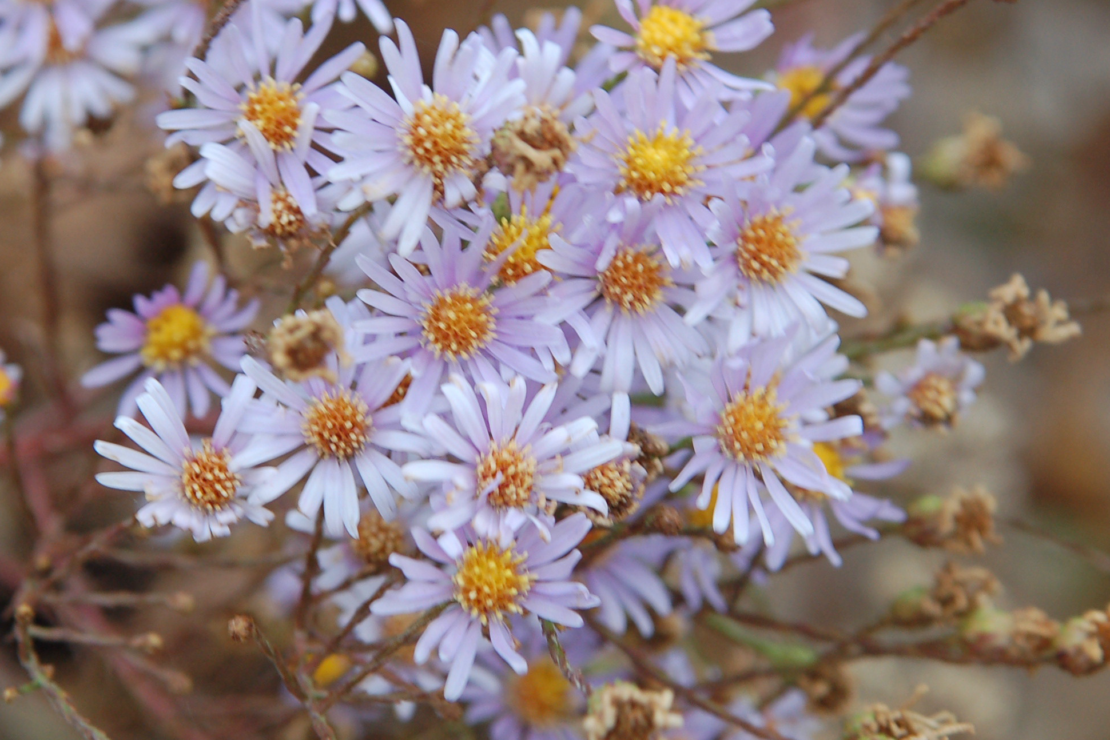
Drought Tolerant Native Plants and Turf Grass Alternatives- A Short List
RWMWD Natural Resources Program Staff
After record-breaking snowfall during the winter of 2022-2023, most of Minnesota is experiencing drought. This year’s drought follows similar dry seasons in the summer months in 2021 and 2022.
Water is one of our most important resources. You can help preserve this special resource by using water wisely and rethinking your yard and garden.
Native Plants Conserve Water and Provide Habitat
Many native plants can withstand dry periods due to their deep roots and other adaptations. The following species are just a few observed in recent months to withstand drought conditions. Remember that all plants need some water to grow and stay healthy, and other conditions, such as soil types and light, will help determine a plant’s success. Native plants provide many benefits, such as improving water quality and providing habitat for wildlife.
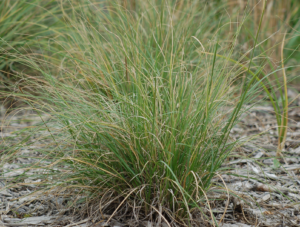
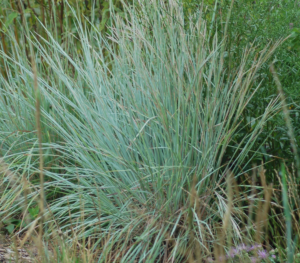
Plants for Full Sun
One of the reasons we have prairies and grasslands in the West and forests in the East is due to precipitation patterns. A lack of rainfall limits the growth of trees and shrubs in parts of the West . Where these woody species don’t grow, prairies with grasses, sedges and wildflowers fill the landscape.
Short prairie grasses such as blue grama, Bouteloua gracilis(left), and little bluestem, Schizachyrium scoparium(right), seem to thrive in drought conditions. They have dense and somewhat deep root systems that allow them to find the moisture they need. Their short stature (1 to 3 feet) means they don’t need as much water to thrive. The taller grasses, such as big bluestem and Indian grass, while still growing, flowering, and setting seed, appear much shorter and less robust because of the drought. The short prairie grasses are generally much better suited to the home landscape as well. Blue grama and little bluestem have attractive flowers and seed heads, and provide fall and winter color interest.
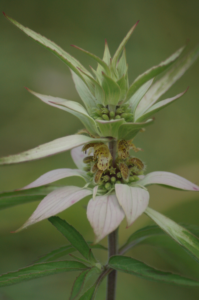
Spotted horsemint was less robust this year but continued to bloom through the drought.
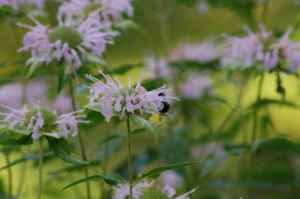
Spotted horsemint, Monarda punctata, AKA spotted beebalm, while much less robust this year, continues to bloom during the drought. It prefers dry, sandy soils but will also grow in heavier, wetter soils. It’s close relative, wild bergamot, Monarda fistulosa, bloomed beautifully earlier this summer in exceptionally dry conditions but then faded with the summer heat and lack of precipitation. Both species are pollinator magnets and make excellent garden plants.
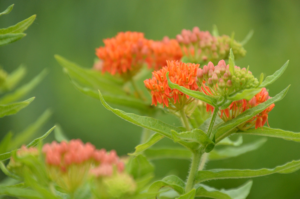
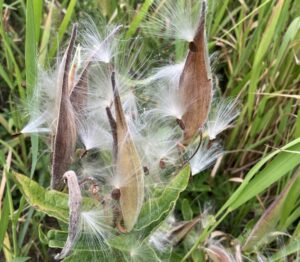
(Left) Butterfly milkweed’s orange blooms put on a show in the summer months. Its leaves provide food for monarch butterfly caterpillars. (Right) After blooming, the wind carries the abundant seeds from its pods.
Many of Minnesota’s milkweed species are handling the drought in stride. Butterfly milkweed Asclepias tuberosa, sent up its attractive, bright orange blooms earlier this summer. There will be plenty of these seeds for you to plant yourself or give to friends and neighbors. Other prairie milkweed species such as common milkweed, Asclepias syriaca, and whorled milkweed, Asclepias verticillata, also don’t mind the drought conditions. Milkweeds are the host plant for monarch butterflies, and they are also used by many other beneficial insects.
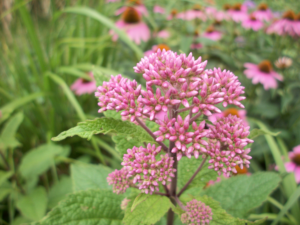
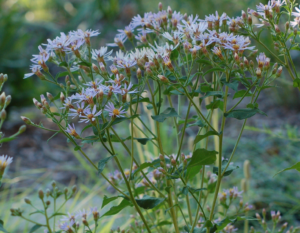
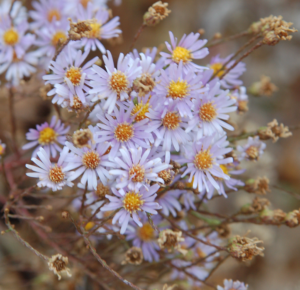
Plants for Shade/Part Shade
Sweet-scented Joe Pye weed, Eutrochium purpureum (left), seemed to laugh at the drought conditions. Its pale pink flowers are a butterfly magnet, and it is also visited by many moth and bee species. This plant can reach heights of 6 feet, so give it space to grow. It also readily spreads in the right conditions.
Large-leaved aster Eurybia macrophylla(center) seems to have handled the drought well. It blooms from August to September in woodlands and native gardens across Minnesota. Its large leaves make a great ground cover when not in bloom. Other asters, such as aromatic aster (Symphyotrichum oblongifolium) and sky-blue aster Symphyotrichum oolentangiense(right), can withstand drought, grow in both part shade and sun, and bring late-season blooms and floral forage for pollinators to the fall landscape.
Turf Grass Alternatives
Are you tired of constantly watering your lawn, or perhaps watering restrictions mean your lawn turned brown and went dormant? Most lawns are Kentucky bluegrass — a cool-season grass from Europe and Asia. While it might look nice in the spring and fall, its shallow, puny roots require lots of water and other inputs to keep it green in the heat of the summer. If you can’t “lose the lawn,” consider turf grass alternatives such as fine fescues. Many native plant nurseries and others sell “No Mow”, “Low Mow”, or “Eco-Grass” seed mixes, that are comprised mainly of fine fescues. While many of the fescues in these mixes are not native to Minnesota, they are not known to be invasive. Fine fescues have deeper roots than Kentucky bluegrass, and are better able to withstand drought. They need minimal watering once established. Bonus: In most landscapes, you only have to mow fine fescue lawns a few times per year.
Watering and Fall Planting Tips
As mentioned earlier, all plants need water to survive. Although many people plant in the spring, fall can also be an ideal time to plant native plants, including trees and shrubs. Cooler temps help retain any moisture that does fall, as do shorter days. More stable temps cause less stress to establishing plants. Someday, it may even rain! Newly planted native plants need 1-2 inches of water per week. Place a rain gauge, can, or jar in or near your planting and supplement rainfall as needed. Avoid light watering as this promotes shallow root systems that are susceptible to summer heat and drought stress. Additional watering may be needed during hot, dry periods. Water up until the first frost. Native plants should not need supplemental watering beyond the 2nd year unless there is a severe drought.
Trees and shrubs should be watered frequently and thoroughly during their first two growing seasons and during times of drought. Even large, established trees benefit from supplemental watering during drought. Watering in the morning or later afternoon in cooler temps is more beneficial as less water is lost to evaporation.
Hopefully, we will come out of this drought soon, and you can sit back, relax, and watch your plants grow!